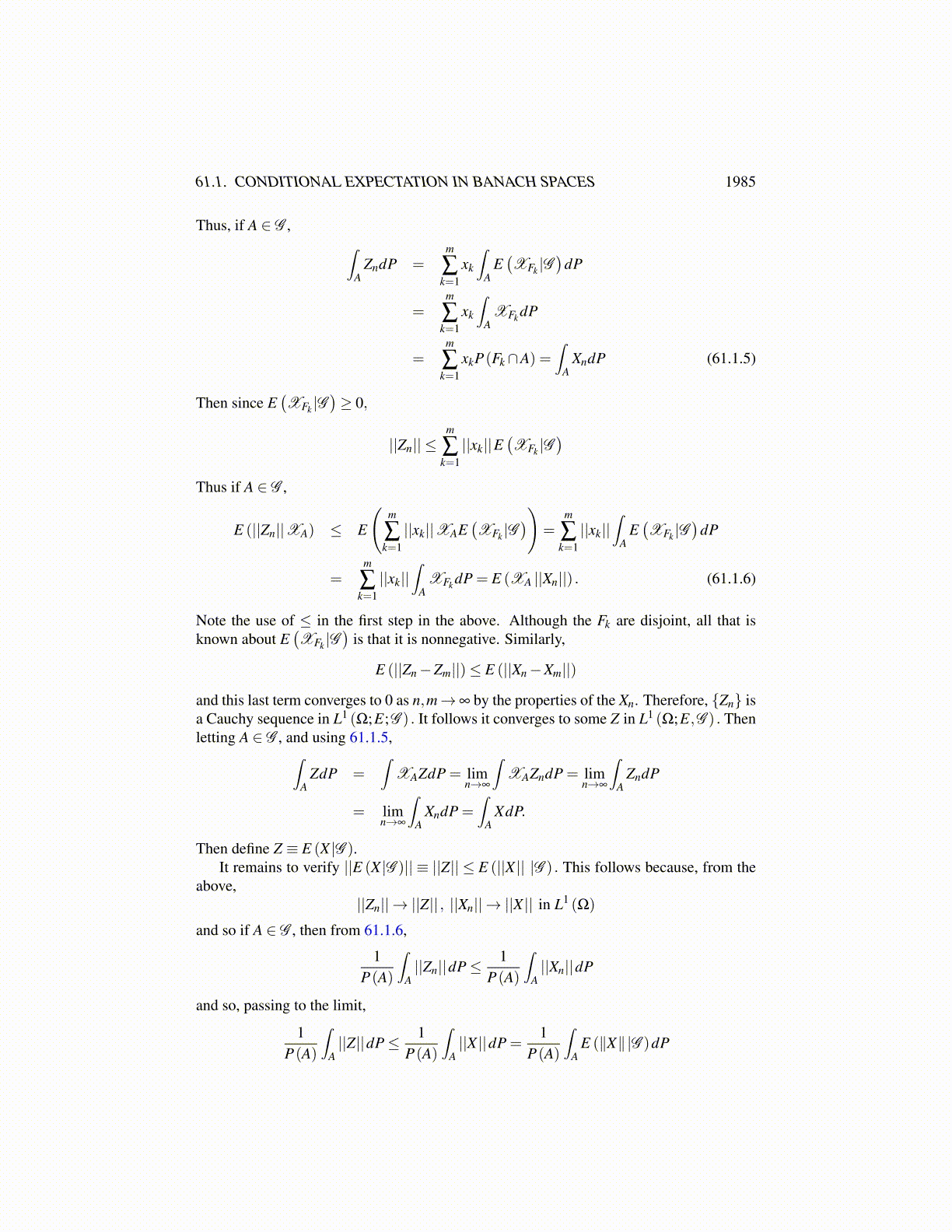
Chapter 61
Probability In Infinite Dimensions61.1 Conditional Expectation In Banach Spaces
Let (Ω,F ,P) be a probability space and let X ∈ L1 (Ω;R). Also let G ⊆F where G isalso a σ algebra. Then the usual conditional expectation is defined by∫
AXdP =
∫A
E (X |G )dP
where E (X |G ) is G measurable and A ∈ G is arbitrary. Recall this is an application of theRadon Nikodym theorem. Also recall E (X |G ) is unique up to a set of measure zero.
I want to do something like this here. Denote by L1 (Ω;E,G ) those functions inL1 (Ω;E) which are measurable with respect to G .
Theorem 61.1.1 Let E be a separable Banach space and let X ∈ L1 (Ω;E,F ) where X ismeasurable with respect to F and let G be a σ algebra which is contained in F . Thenthere exists a unique Z ∈ L1 (Ω;E,G ) such that for all A ∈ G ,∫
AXdP =
∫A
ZdP
Denoting this Z as E (X |G ) , it follows
∥E (X |G )∥ ≤ E (∥X∥ |G ) .
Proof: First consider uniqueness. Suppose Z′ is another in L1 (Ω;E,G ) which works.
Consider a dense subset of E {an}∞
n=1. Then the balls{
B(
an,∥an∥
4
)}∞
n=1must cover E \
{0}. Here is why. If y ̸= 0, pick an ∈ B(
y, ||y||5
).
y an
0
Then ||an|| ≥ 4 ||y||/5 and so ||an− y||< ||y||/5. Thus
y ∈ B(an, ||y||/5)⊆ B(
an,||an||
4
)Now suppose Z is G measurable and ∫
AZdP = 0
1985